Disinfection Tips for Childcare Providers
With the recent outbreak of enterovirus D68 and the upcoming flu season, we asked Indigo® Instruments to talk to us about the importance of sanitizing and disinfection for childcare providers in day care centers and schools. They provided us with some valuable information and great tools we think you’ll find helpful.
Disinfection at schools and day care centers is very important, and has gained attention with the spread of respiratory illnesses like colds, influenza (flu), and more recently, the entrovirus D68. According to the Center for Disease Control (CDC), an average of 20,000 children under the age of five are hospitalized each year because of flu-related complications. In addition, from mid-August to November of this year, a total of 1,116 confirmed cases of respiratory illness were caused by enterovirus D68.
The CDC encourages staff, children and parents to take every day preventative actions, including:
- Stay home when you are sick
- Cover your nose and mouth when you cough or sneeze
- Wash your hands often with soap and water
- Avoid touching your eyes, nose or mouth
- Clean and disinfect surfaces or object frequently
Cleaning, Sanitizing, and Disinfecting
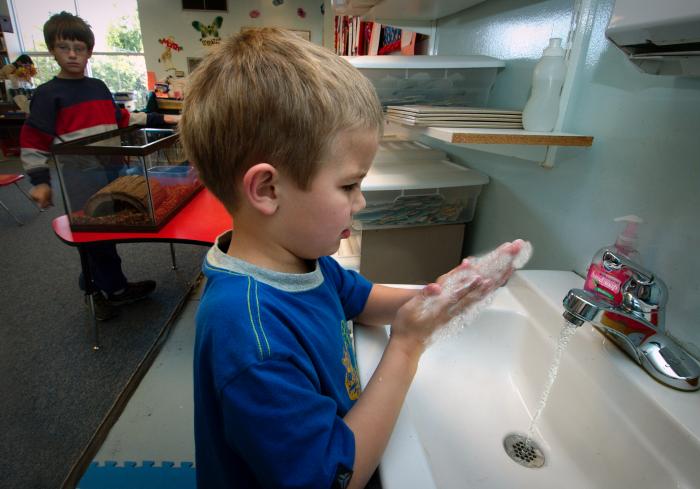
Photo Credit: James Gathany / CDC
Last week, we posted an article about the difference between cleaning, sanitizing, and disinfecting. It is important to know the difference when trying to prevent the spread of illness.
Here’s a quick refresher:
Clean – The process that physically removes debris from the surface or area by scrubbing, washing, and rinsing with soap or detergent and water.
Sanitize – A product that kills 99.9% of germs identified on its label.
Disinfect – A product that kills nearly 100% of germs identified on its label.
Standard procedures will vary by facility and regulations can vary by state. Typically, standard procedures include daily cleaning and sanitizing of frequently touched surfaces and daily disinfection of specific areas including bathrooms.
It is important to do routine cleaning and disinfection, as studies have shown that the flu virus can live and potentially infect a person for only 2 to 8 hours after being deposited on a surface. In addition, make sure you are using cleaners and disinfectants that are proven to remove or kill these types of germs, and follow their instructions for use.
Disinfecting with Chlorine Bleach
Fresh chlorine bleach is commonly used to disinfect surfaces and objects. Disinfection of certain organisms and viruses requires higher concentrations of bleach.
In day care centers and schools, 50-200ppm chlorine bleach can be used for general purpose sanitizing and 500-800ppm can be used for general purpose disinfection. Again, these guidelines vary by state. It is best to check with your local health officials for sanitizing and disinfecting regulations.
Indigo® Instruments FREE Resources

Indigo® Instruments carries the Chlorine 0-2,000ppm test strip, and lucky for you, they have also provided FREE resources that will make your life easier.
One great tool from Indigo® Instruments is a table that shows how much bleach is needed to make up different concentrations of disinfectant based on an initial concentration of 5%. Although most store-bought bleach sold in North America is rated at 5.25%, they have taken into account the fact that bleach loses strength over time.
By visiting this link and clicking on the Specifications tab, you can view further instructions, along with the table below for making up various concentrations of bleach.
Amount of 5% Chlorine Bleach to Make Final Volume
| 2500 (ppm)ml Bleach | 5000 (ppm)ml Bleach | 10,000 (ppm)ml Bleach | Volume (ml)Final |
|---|---|---|---|
| 12.5 | 25 | 50 | 250ml |
| 50 | 100 | 200 | 1000ml |
| 200 | 400 | 800 | 4000ml |
| 11.25 | 22.5 | 45 | 225ml (US cup) |
| 47.5 | 95 | 190 | 950ml (US Quart) |
| 190 | 380 | 760 | 3.8L (US Gal.) |
In addition, Indigo® Instruments has also created a sanitizer dilution calculator. The calculator can be used to prepare dilutions for chlorine, as well as iodine and hydrogen peroxide solutions. It doesn’t get any easier than this.
Simply enter your starting solution concentration (for example, 5.25% for fresh store-bought bleach), then enter the desired ppm concentration. Lastly, enter the desired volume you want to make in mL or L, and press the Calculate button! The calculator will tell you the amount of undiluted sanitizer to be with water to make the desired volume. Easy-peasy!
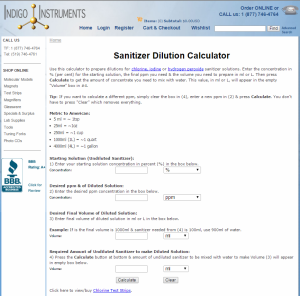
For access to these free resources and more information on chlorine test strips, please visit www.indigoinstruments.com. You can also read about other chlorine test strips on their blog post, Chlorine Bleach Disinfectant – An Old Chemical for New Bugs.
Keep an eye out for another upcoming Tech Talk article with Indigo® Instruments on the Ebola virus and disinfection in hospitals where they’ll provide more valuable information, and you’ll be sure to find more opportunities to use their free resources.


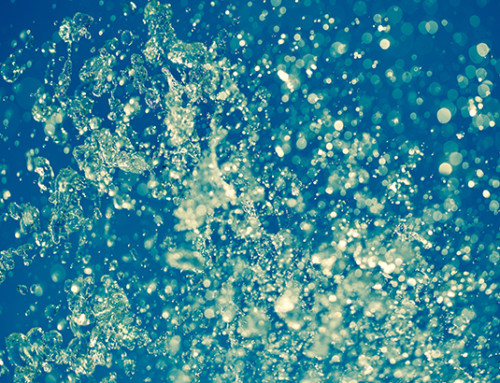
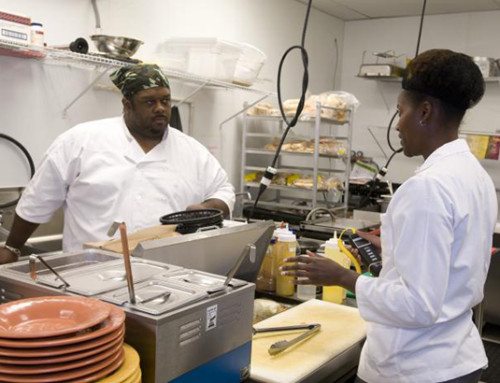
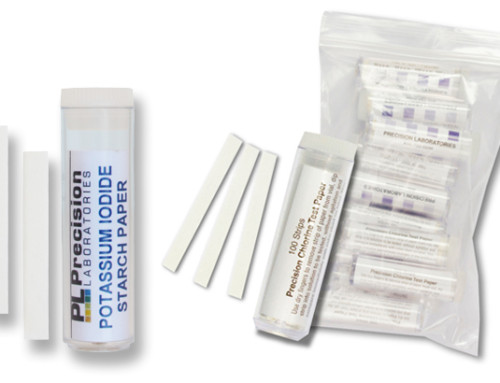
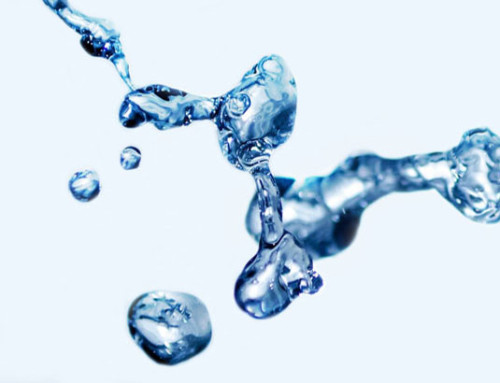

Leave A Comment